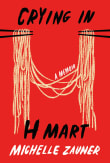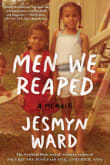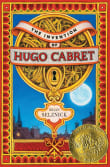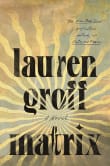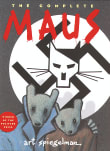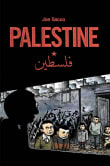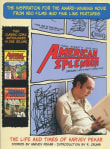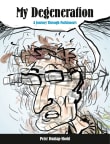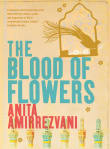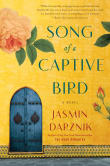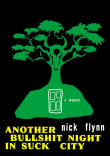Persepolis
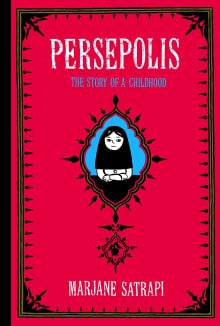
Book description
Wise, often funny, sometimes heart-breaking, Persepolis tells the story of Marjane Satrapi's life in Tehran from the ages of six to fourteen, growing up during the Iranian Revolution.
The intelligent and outspoken child of radical Marxists, and the great-grandaughter of Iran's last emperor, Satrapi bears witness to a childhood uniquely…
Why read it?
9 authors picked Persepolis as one of their favorite books. Why do they recommend it?

I love “Persepolis” because the author very accurately and with a great amount of humor describes, and through graphics, portrays the very heavy topic of the 1979 Iranian Revolution.
She makes it easy for people who weren’t there at the time and are not a part of the culture or history to imagine what happened. I like how she describes family relationships, especially with her parents, in a tribal culture. In a very transparent way, she accurately describes the differences between private family life and the one that is portrayed publicly.
From Katy's list on Iranian women of survival and strength.

Growing up during the Islamic Revolution in Iran in 1979, Marji is outspoken and brave and one of several strong female characters in this book who challenges stereotypes and kicks ass. I loved following her political, spiritual, and personal growth.
Persepolis is a much-needed history lesson in the form of a comic book. It deals with heavy themes, but not without a generous dose of humor and heart. My students and I often spent several minutes dissecting one panel—and the last panel made some of us weep.
From Catherine's list on coming of age Asian authors love a good cry.

This graphic novel recounting the author’s childhood during the 1979 Revolution in Iran captures complexity in simplicity.
From the first panel, showing a young girl unhappily wearing a hijab, I was hooked, but the insights Satrapi evokes about living in those complicated times held me even more than my attachment to the protagonist. I’ve always found Iran to be a misunderstood country, but the visual exploration of Persepolis left me with a greater appreciation for just how misunderstood and just how diverse the country is.
Fun might not be the right word, but the lightness that she uses to discuss…
From John's list on conversations about religion and politics.
If you love Persepolis...

I always include this book when I teach graphic novel workshops because it’s such a beautiful and profound exploration of childhood in flight. In the second volume, Satrapi reveals the cultural mishaps she encounters as a teen who escapes Tehran for Vienna.
Marjane fears she is losing her Iranian identity as she gets lost in a haze of drugs and partying, but she also feels out of place after returning to Iran. Years later, Marjane realizes with anguish that her future lies in Europe and is compelled to leave her family again.
From Ali's list on cities and exile.

Persepolis is the book that made me fall in love with graphic memoirs.
I’ve typically been more of a word person than a picture person, but Satrapi’s stark black-and-white images make such creative use of the space on the page that I was converted. I learned so much about the history of Iranian conflict from this book—through the young girl eyes of its narrator—but my favorite part is the way Satrapi visually depicts her conversations with God.
After I read this book, I started drawing images of my conversations with God into my own prayer journal.
From Sarah's list on memoirs to see the world through someone else’s eyes.

This is a brilliant graphic memoir that depicts the Islamic Revolution and its aftermath through the eyes of a precocious young girl. It’s heart-wrenching, hilarious at times, and a keen examination of life under a religious dictatorship: absurd, hellish, dangerous. You’ll fall in love with this wise girl and enjoy her story so much, you won’t realize how much you’ve learned about Iran, war, democracy, totalitarianism, and the courage it takes to survive. This memoir is often compared to Art Spiegelman’s MAUS.
From Susanne's list on strong Iranian women.
If you love Marjane Satrapi...

One of the key questions that I have heard from the academics analyzing the documentary format in comics is the question about the subject who draws their experience in comics in order to make the reader feel a vivid experience through ink and paper. Persepolis does this, while telling you the story of a woman, the author. While telling us a story about injustice, oppression from a graphic witness. The travels, the friends lost, the tense environment between Europe and Iran. All these elements make Persepolis a masterpiece.
From Camilo's list on international documentary comics about the world.

In Persepolis, by Marjane Satrapi, a woman of my generation, depicts her childhood up to her early adult years in Iran and Austria during and after the Islamic Revolution in Iran. She, like me, was shaped by the horrors and struggles after the Islamic Revolution. It’s a graphic memoir told in a gripping and vivid voice.
From Nazila's list on the feeling of having your identity taken from you.

This wise and witty, tragic, and often politically oriented autobiography begins in Iran in 1980 after the Shah has been overthrown and a hardcore Islamic regime has taken its place. Using a black and white comic book format, Satrapi first introduces herself as a veiled, disgruntled 10-year-old schoolgirl upset by the new government’s strict Islamic rules. Have some fun as you follow her through her own coming-of-age stories via a great sense of humor. In the mix, she will pull you in and tell you more about history than most other media can ever portray.
From Rosalyn's list on terrifying tales weaved together with magnificent art.
If you love Persepolis...
Want books like Persepolis?
Our community of 12,000+ authors has personally recommended 100 books like Persepolis.




